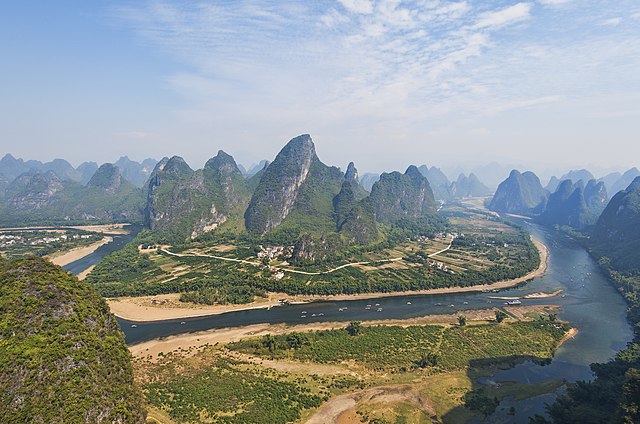A landscape is the visible features of an area of land, its landforms, and how they integrate with natural or human-made features, often considered in terms of their aesthetic appeal. A landscape includes the physical elements of geophysically defined landforms such as mountains, hills, water bodies such as rivers, lakes, ponds and the sea, living elements of land cover including indigenous vegetation, human elements including different forms of land use, buildings, and structures, and transitory elements such as lighting and weather conditions. Combining both their physical origins and the cultural overlay of human presence, often created over millennia, landscapes reflect a living synthesis of people and place that is vital to local and national identity.
A prairie: Badlands National Park, South Dakota
Tropical rainforest, Fatu Hiva Island, Marquesas Islands, French Polynesia
Tundra in Siberia
Taiga (boreal forest), Alaska
A landform is a natural or anthropogenic land feature on the solid surface of the Earth or other planetary body. Landforms together make up a given terrain, and their arrangement in the landscape is known as topography. Landforms include hills, mountains, canyons, and valleys, as well as shoreline features such as bays, peninsulas, and seas, including submerged features such as mid-ocean ridges, volcanoes, and the great ocean basins.
This conical hill in Salar de Arizaro, Salta, Argentina called Cono de Arita constitutes a landform.
Panorama of Great Smoky Mountains National Park showing physical features of a rolling plain, actually part of a broad valley, distant foothills, and a backdrop of the old, much weathered Appalachian mountain range
Karst tower landforms along Lijiang River, Guilin, China







